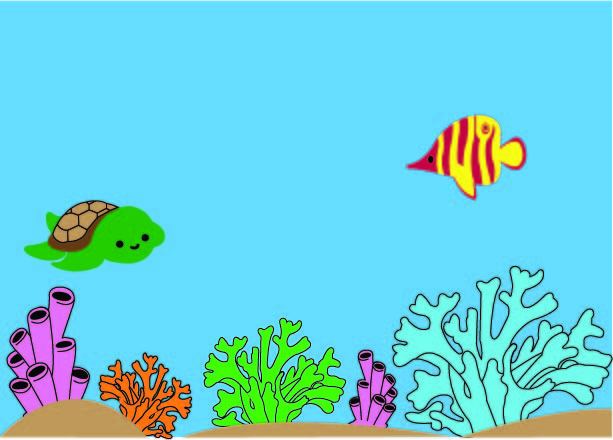The Newest and Bluest Restoration Project
February 18, 2022
The health of Australia’s Great Barrier Reef, the world’s most extensive coral reef ecosystem, has been in a critical state and deteriorating as climate change warms the waters surrounding it. Global warming helped wipe out 14 percent of the world’s coral reefs between 2009 and 2018, the largest ever survey of coral health had found, warning that more and more of the vibrant underwater ecosystems will die if oceans warm further. People as far away as Washington even had an opinion, “What I know about the Great Barrier Reef is that it is extremely endangered and damaged,” says junior Veronica Lepekhina. She could not be more right, with The World Heritage listed site on Australia’s northeastern coast having lost more than half its coral in the past three decades. The International Union for Conservation of Nature has said in a report that coral bleaching, which occurs when hotter water destroys the algae the coral feeds on and causes it to turn white, further damaged its health from 2016-2020 and affected its animal, bird, and marine population.
Some of the activities which threaten it, such as fishing and coastal development, could be tackled by the Great Barrier Reef’s management system, but other pressures cannot be addressed at site level, such as climate change, which is widely recognised as the greatest threat. Progress towards safeguarding the reef under a sustainability plan lasting until 2050 has been slow and, so far, it has not been possible to stop the deterioration. The turtle populations as well as the scalloped hammerhead shark, many seabird populations, and possibly some dolphin species have also seen a sharp decline. A sad truth we may have to accept soon, the Great Barrier Reef could become an attraction of the past. “Some areas may not recover where we have done the most damage,” says sophomore Callahan Marshall in agreement.
Other such sites have not escaped the fate befalling the Great Barrier Reef. Brazil’s Pantanal Conservation Area has been badly damaged due to the unprecedented 2019-2020 wildfires blamed on climate change. In South Africa, climate change has been blamed for the worsening spread of invasive species in the Cape Floral Region Protected Areas. Meanwhile, the Kaskawulsh Glacier, which is located between Canada and the United States, is rapidly melting and changing the river flow, as well as depleting fish populations. With these issues in mind, senior Joey Wilner sums the situation up perfectly: “I know that the glaciers are melting and causing the oceans to rise, but the main problem will always be global warming.” In all, the IUCN said that 30 percent of World Heritage sites are considered of significant concern while seven percent are in critical condition.
The outlook for Comoe National Park in Ivory Coast, however, has continued to improve after moving from critical in 2014 to significant concern in 2017. One such program aiding the Great Barrier Reef has seen similar results. IVF stands for In vitro fertilization, and has been used in humans for years. Lepekhina says, “I think it’s a good thing to have for possible parents, a good and safe alternative to having children naturally.” But coral IVF, on the other hand, is a world leading technique to grow baby corals and use them to restore damaged coral reefs. The idea to intervene in the breeding process came to Peter Harrison while he was drifting through trillions of coral eggs during a mating ritual at the Great Barrier Reef, occurring each year in the light of a full moon. That moment in the early 1980s kicked off a lifetime of research for Harrison, a professor at Australia’s Southern Cross University, and culminated in the development of a process that he describes as something akin to coral IVF.
Harrison’s coral IVF process starts by capturing matter from multiple coral spawns around the reef, which form into a pinkish film on the ocean’s surface during mass spawning events. His team uses floating nets with booms, or a net that resembles a modified swimming pool skimmer. Then, the eggs and sperm from different colonies are mixed to maximize the chances of fertilization and genetic diversity. The larvae are left to grow in floating pools anchored near the reef for about a week, where they are safe from predators and can be kept from drifting away. When the time is right, the larvae are settled onto depleted reefs. This can be done by opening the bottom of the net to allow the larvae to flow out over the reef system, or by piping the larvae directly onto reefs. Scientists have even begun using AI enabled robots called LarvalBots, which work to deliver larvae. Known as The Reef Restoration and Adaptation Program, this is the world’s largest and most ambitious effort to develop, test, and deploy protection, restoration, and adaptation interventions to ensure that the Great Barrier Reef and coral reefs globally can resist, adapt to, and recover from the impacts of climate change.
Now, after hearing about the newest technology being used in environmental aid, you may ask yourself what you can do. Students at IHS have this to say about healing our oceans.
“We need to care more about what we put into the environment,” says freshman Nina Nowak. “Be kind to our oceans and remember they are habitats too” Marshall adds. “Use coral safe sunscreen,” says Lepekhina. “Don’t litter and be more thoughtful about our environment,” Wilner advises.
Little efforts may not seem all that impactful, but in this day and age, anything counts. With the research done by scientists halfway across the world, and our personal progress towards a cleaner environment, we may be able to restore the Great Barrier Reef to its former glory.




